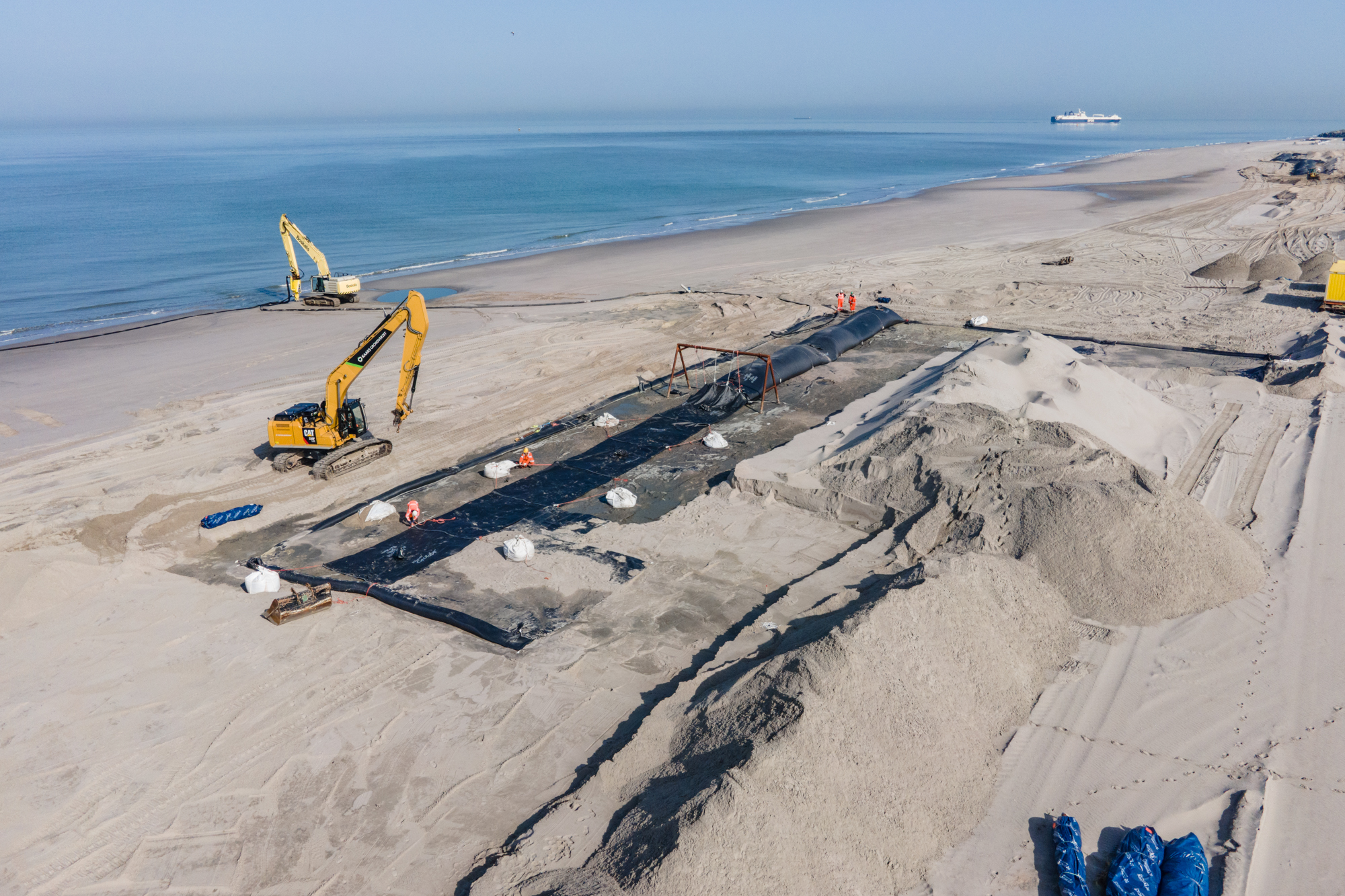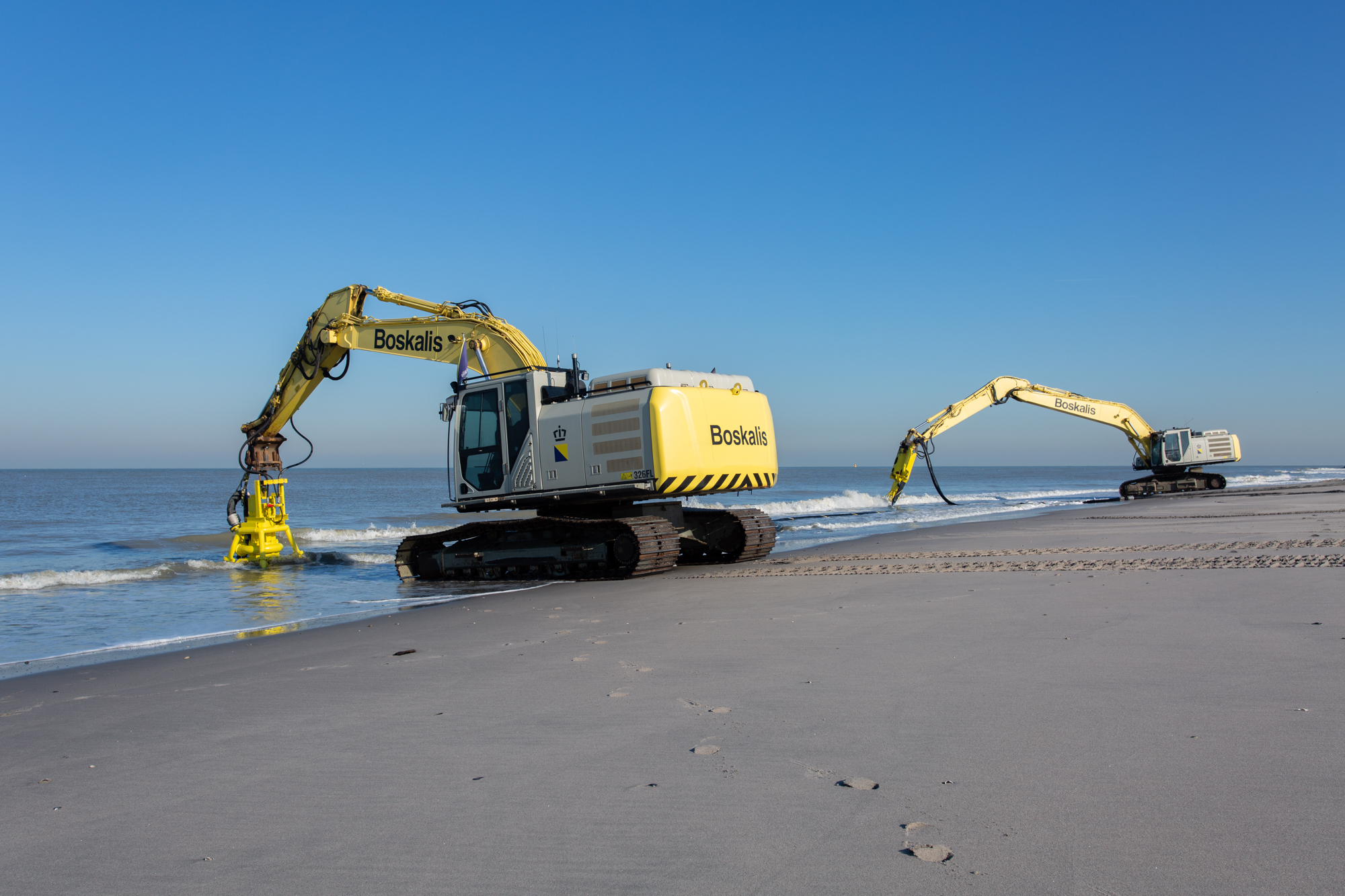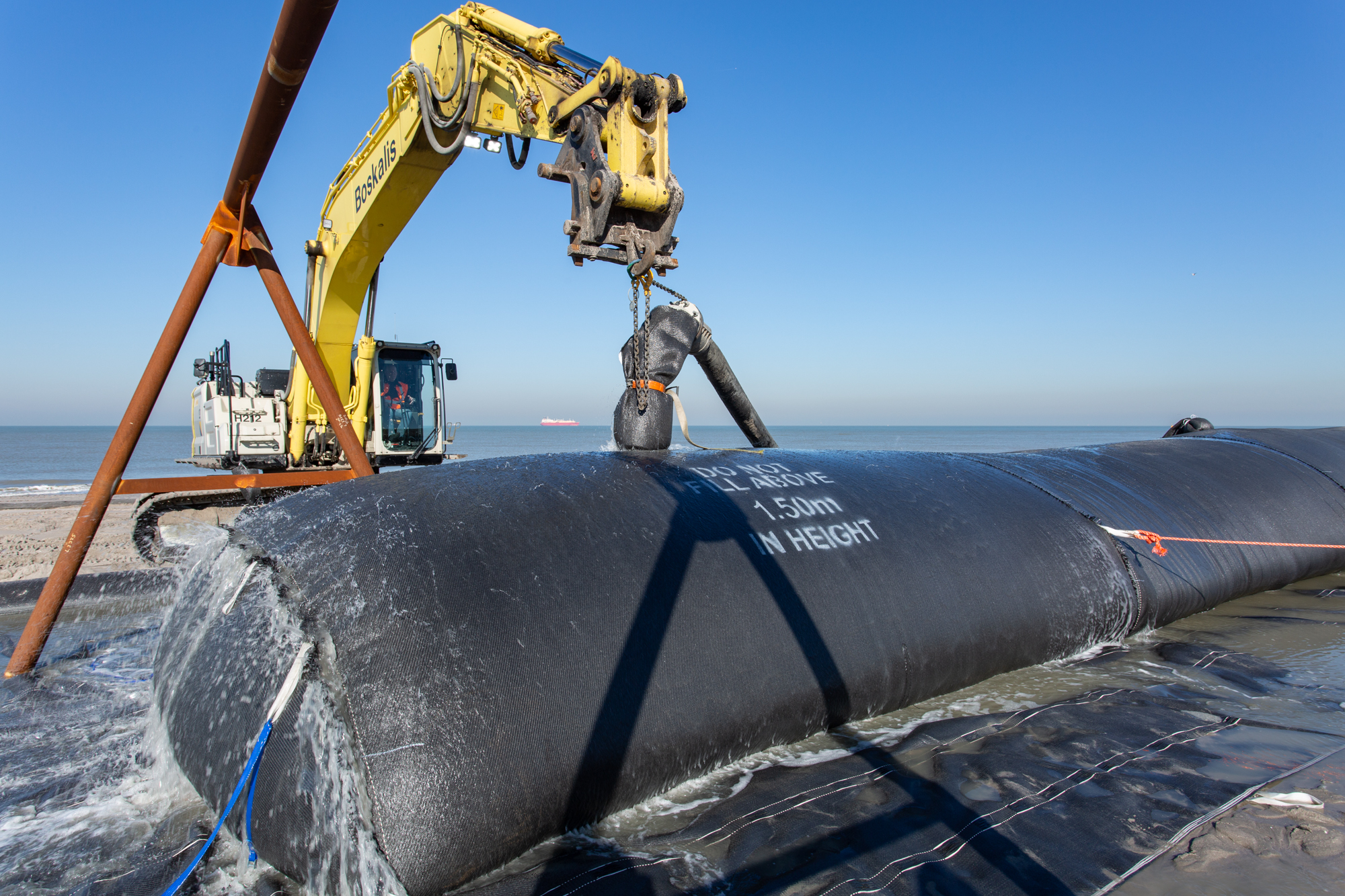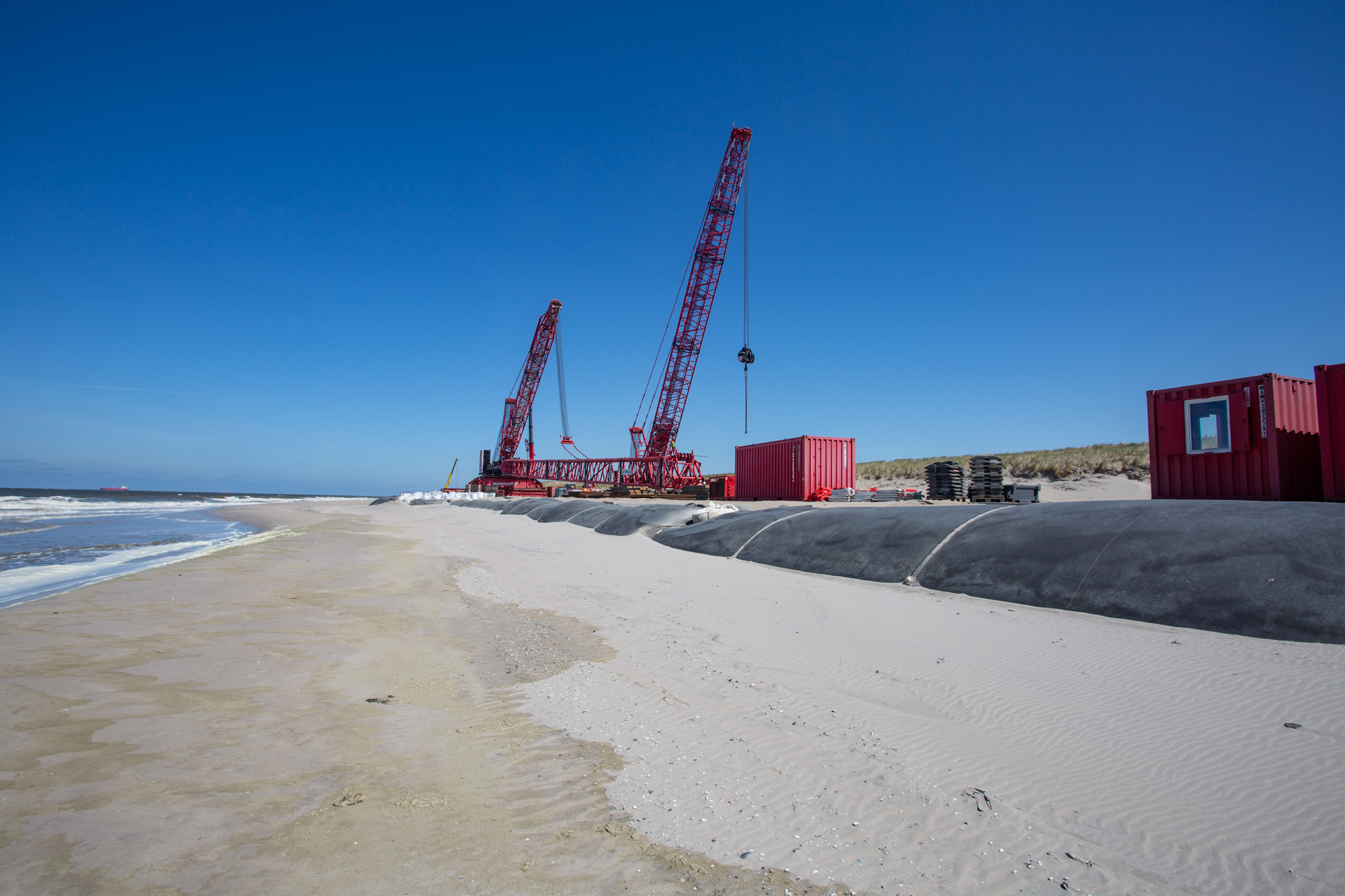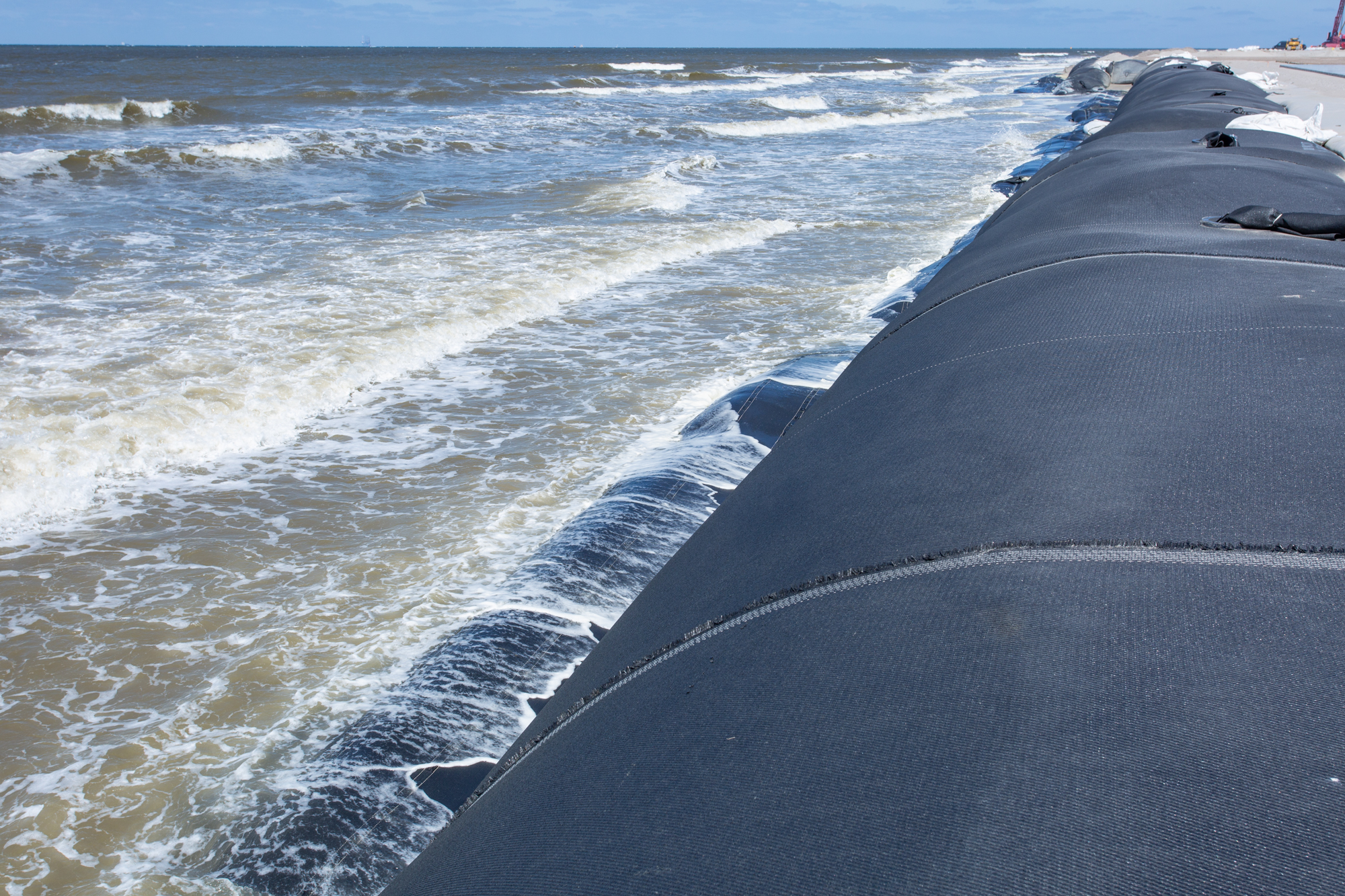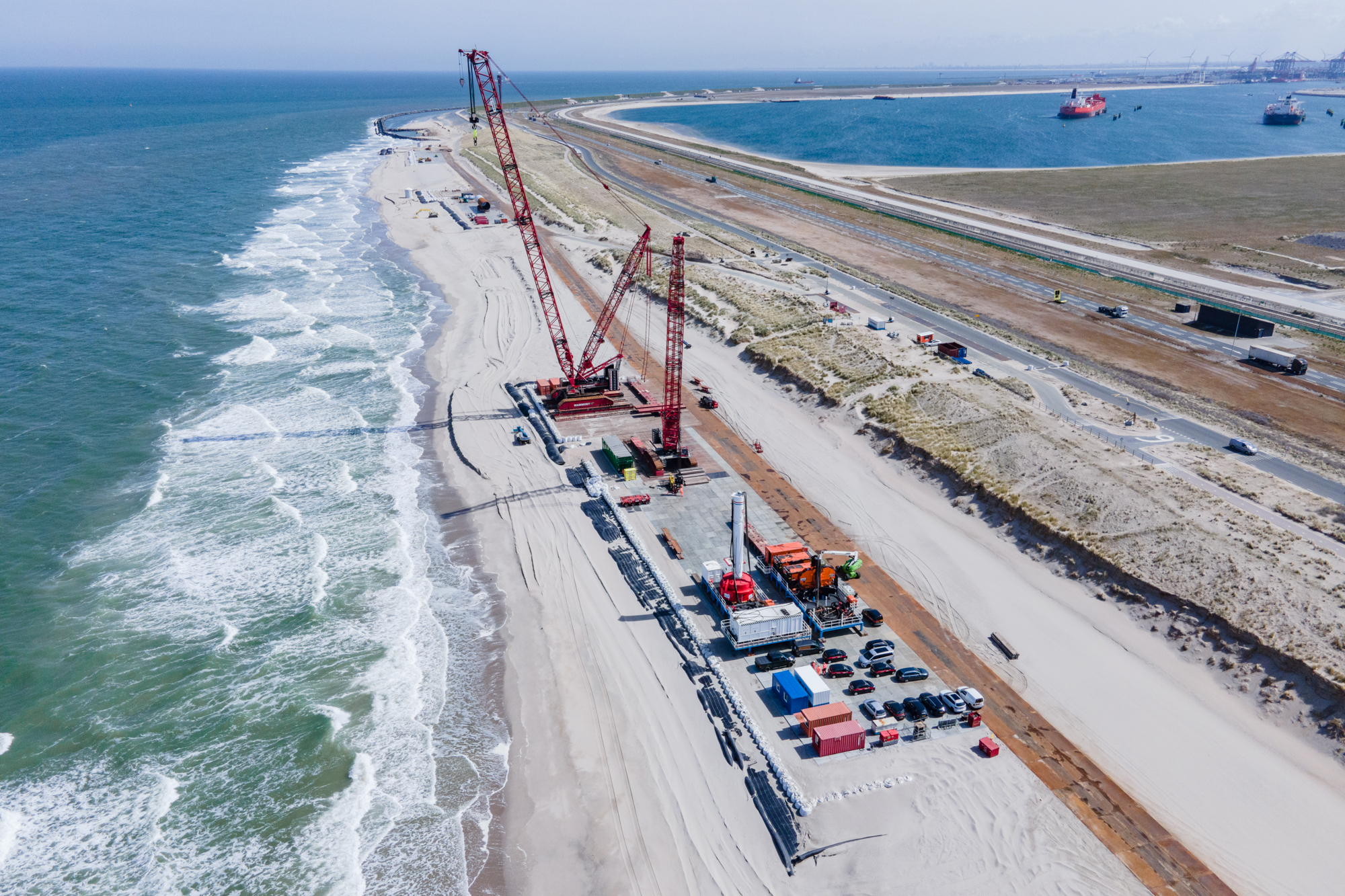Protecting crane staging areas against flooding
For the installation of the monopiles and subsequently the turbines themselves, one of the largest mobile cranes is used. To prevent the crane from sinking into the sand, a crane staging area is required at each location that can withstand the pressure of the crane and its components.
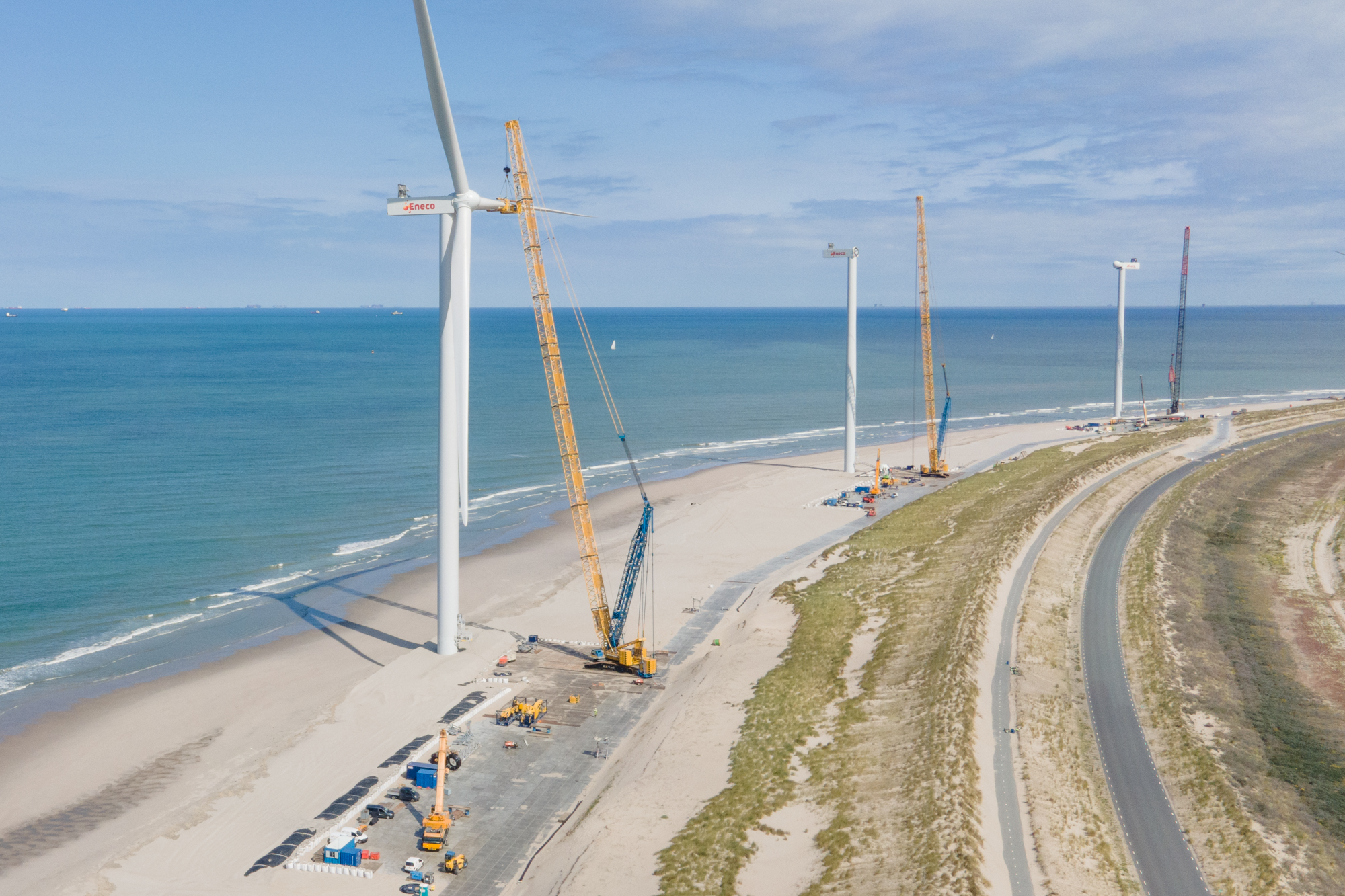
Solmax Geotubes protect twelve crane staging areas on the beach

To meet the ambition of generating more sustainable energy, Eneco is constructing Windpark Maasvlakte 2 on behalf of Rijkswaterstaat, featuring a total of 22 wind turbines. Twelve of these turbines will be installed on the beach, each supported by a monopile foundation.
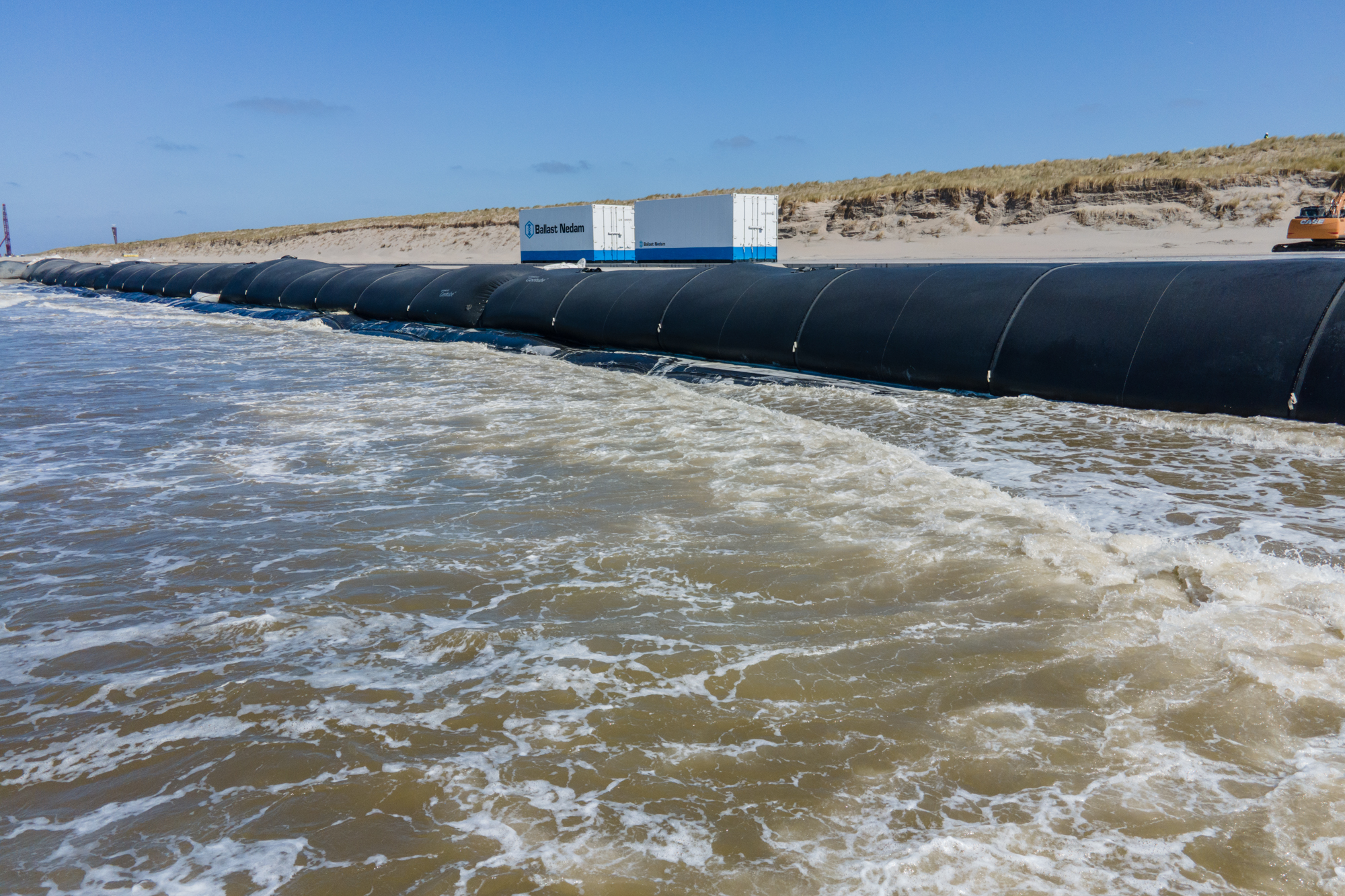
Dynamic beach level
A major challenge during the design phase of the crane staging areas was the dynamic nature of the beach level. The height of the beach continuously changed due to the impact of storms Dudley, Eunice, and Franklin, while the height of the crane staging areas remained fixed. Additionally, the staging areas had to withstand unpredictable weather conditions and seawater reaching the beach during high tide even after construction.
Geotubes
After evaluating various options, contractor Ballast Nedam chose a construction using TenCate Geotubes, supplied by Joosten Kunststoffen from TenCate Geosynthetics, custom-made for each location (length and diameter). Netics, in collaboration with Crux, is responsible for the structural stability calculations of the construction. Joosten Concepts partner Geologics provided input regarding the crane load on the staging areas.
After the turbines are completed, all crane staging areas will be dismantled, leaving only the native sand from the Geotubes behind on the beach.
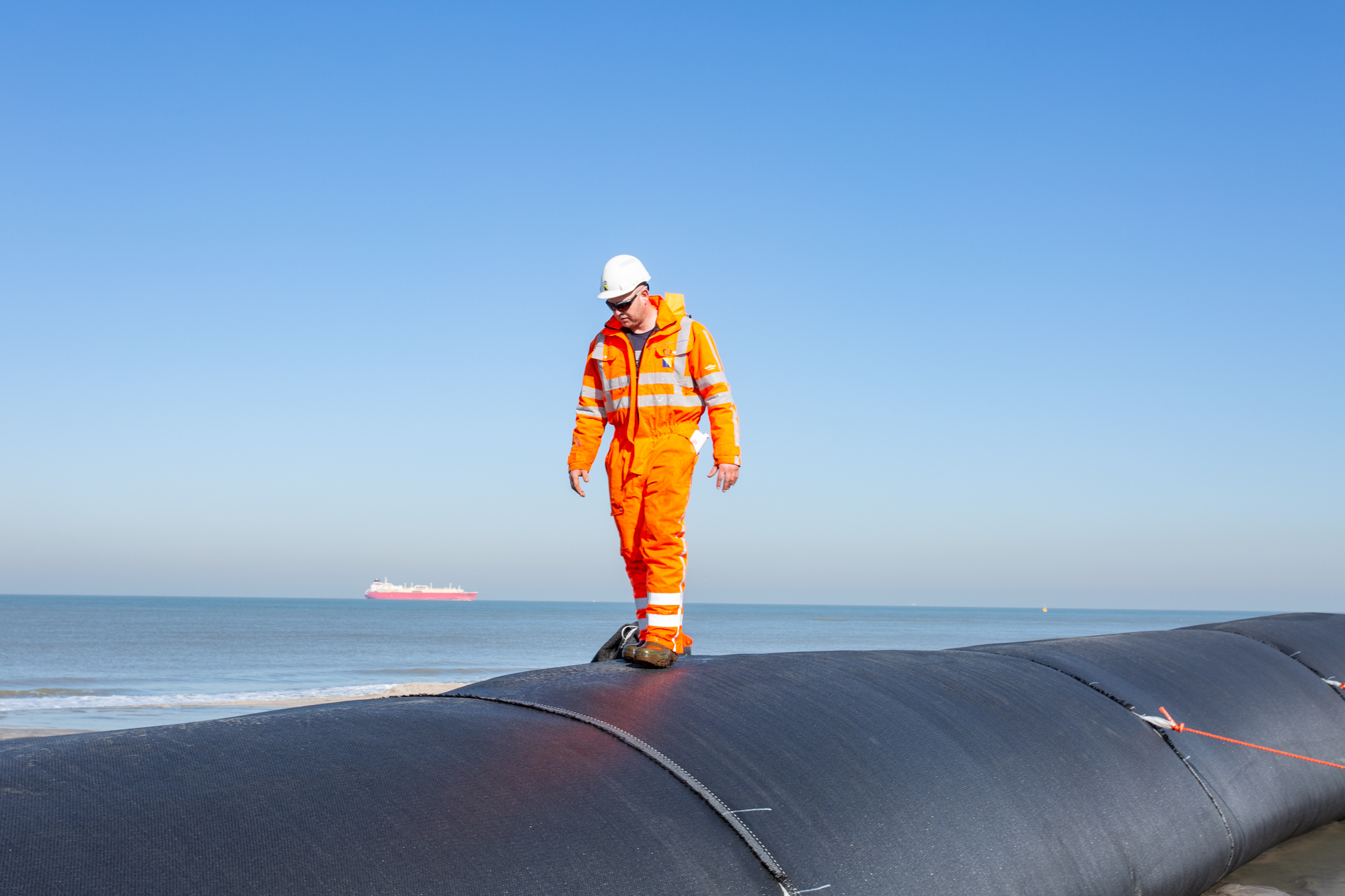
Specifications
Project:
Windpark Maasvlakte 2 - Rotterdam
Windpark Maasvlakte 2 - Rotterdam:
Supplying Geotubes for crane staging areas
Client:
Eneco i.o.v. Rijkswaterstaat
Contractor:
Ballast Nedam
Design:
Netix, Crux, Geologics
Supplier:
Joosten Kunststoffen i.s.m. Solmax (TenCate)
